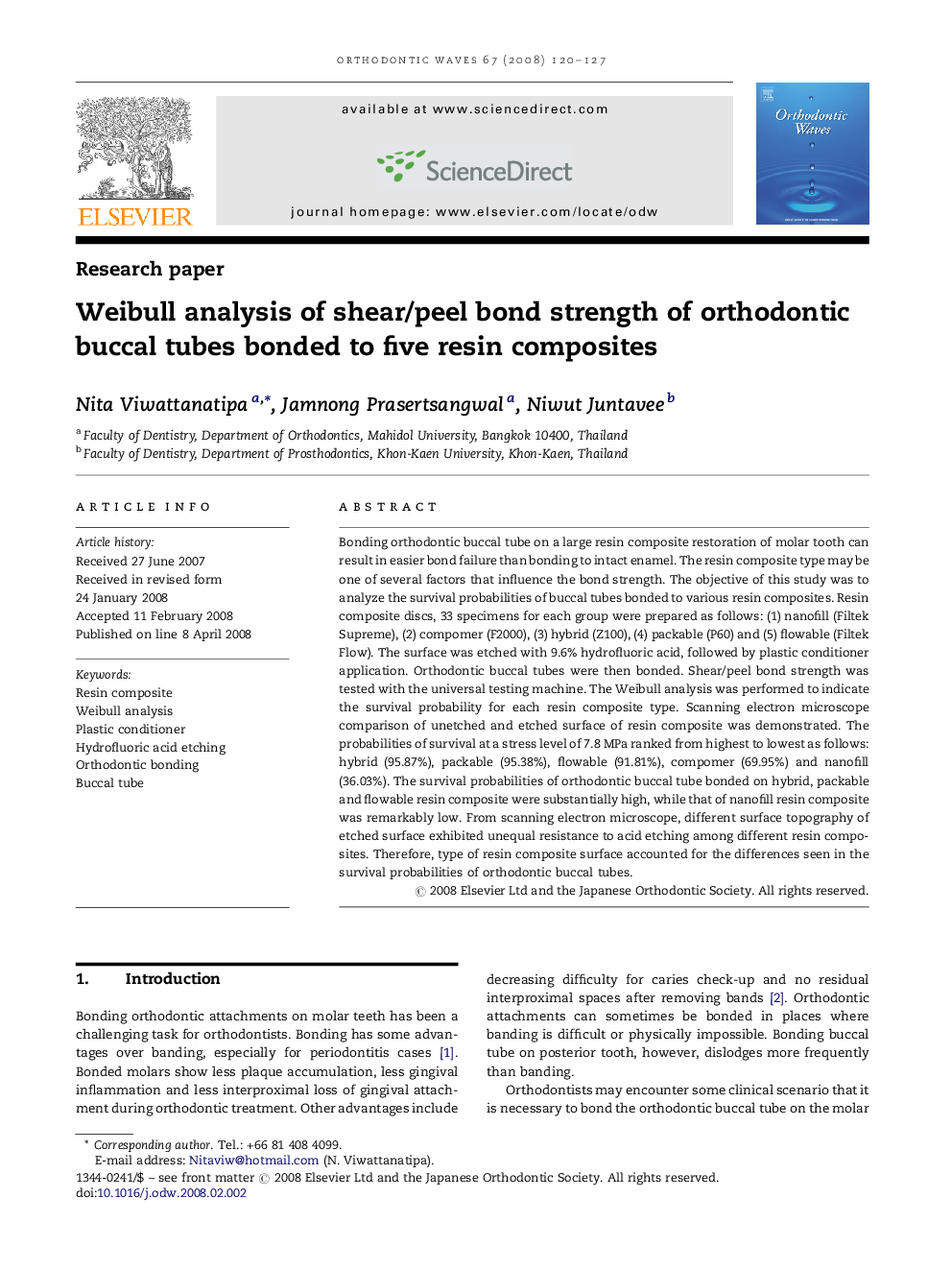| Article ID | Journal | Published Year | Pages | File Type |
|---|---|---|---|---|
| 3170674 | Orthodontic Waves | 2008 | 8 Pages |
Bonding orthodontic buccal tube on a large resin composite restoration of molar tooth can result in easier bond failure than bonding to intact enamel. The resin composite type may be one of several factors that influence the bond strength. The objective of this study was to analyze the survival probabilities of buccal tubes bonded to various resin composites. Resin composite discs, 33 specimens for each group were prepared as follows: (1) nanofill (Filtek Supreme), (2) compomer (F2000), (3) hybrid (Z100), (4) packable (P60) and (5) flowable (Filtek Flow). The surface was etched with 9.6% hydrofluoric acid, followed by plastic conditioner application. Orthodontic buccal tubes were then bonded. Shear/peel bond strength was tested with the universal testing machine. The Weibull analysis was performed to indicate the survival probability for each resin composite type. Scanning electron microscope comparison of unetched and etched surface of resin composite was demonstrated. The probabilities of survival at a stress level of 7.8 MPa ranked from highest to lowest as follows: hybrid (95.87%), packable (95.38%), flowable (91.81%), compomer (69.95%) and nanofill (36.03%). The survival probabilities of orthodontic buccal tube bonded on hybrid, packable and flowable resin composite were substantially high, while that of nanofill resin composite was remarkably low. From scanning electron microscope, different surface topography of etched surface exhibited unequal resistance to acid etching among different resin composites. Therefore, type of resin composite surface accounted for the differences seen in the survival probabilities of orthodontic buccal tubes.
